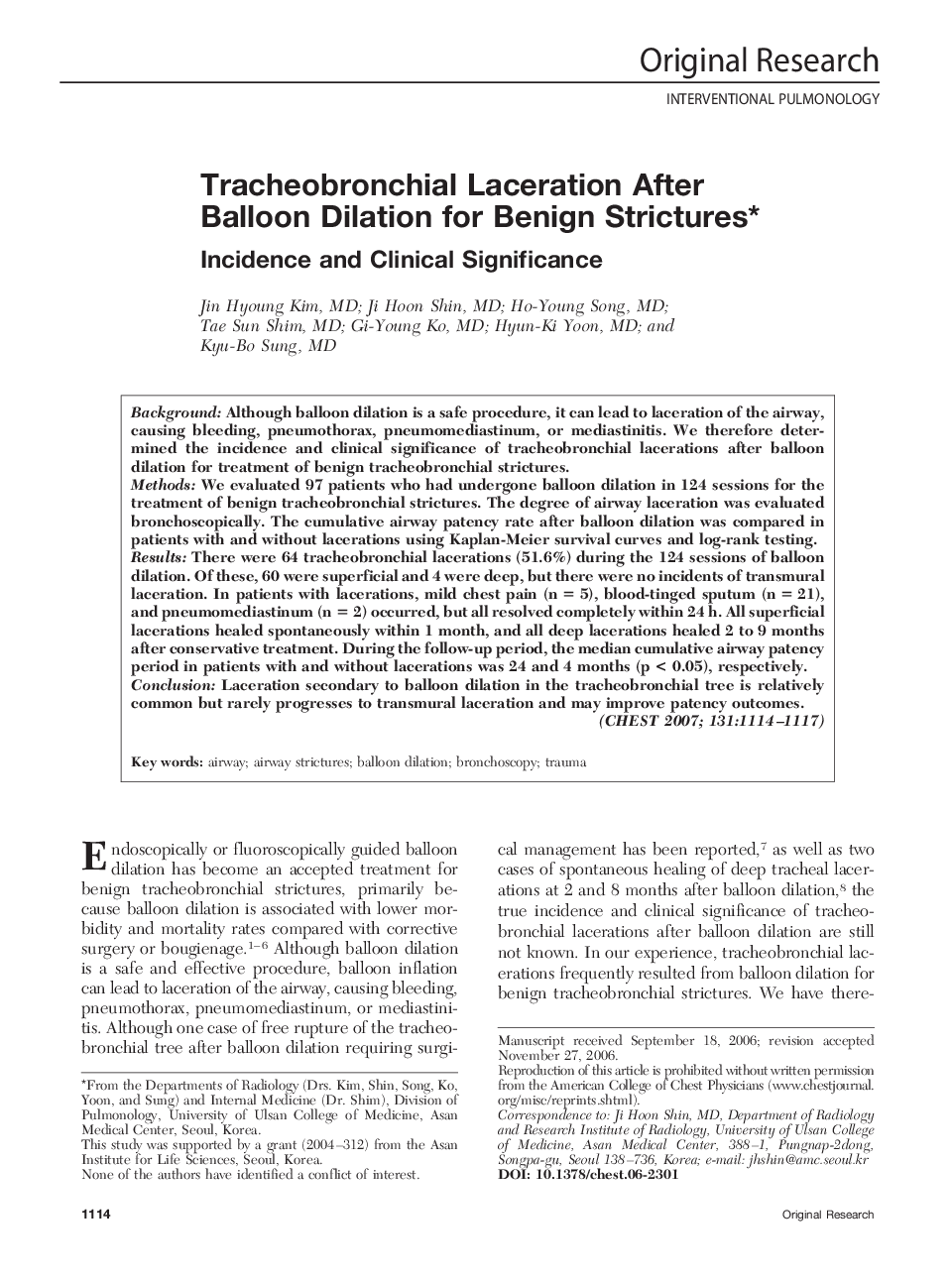| Article ID | Journal | Published Year | Pages | File Type |
|---|---|---|---|---|
| 2905050 | Chest | 2007 | 4 Pages |
BackgroundAlthough balloon dilation is a safe procedure, it can lead to laceration of the airway, causing bleeding, pneumothorax, pneumomediastinum, or mediastinitis. We therefore determined the incidence and clinical significance of tracheobronchial lacerations after balloon dilation for treatment of benign tracheobronchial strictures.MethodsWe evaluated 97 patients who had undergone balloon dilation in 124 sessions for the treatment of benign tracheobronchial strictures. The degree of airway laceration was evaluated bronchoscopically. The cumulative airway patency rate after balloon dilation was compared in patients with and without lacerations using Kaplan-Meier survival curves and log-rank testing.ResultsThere were 64 tracheobronchial lacerations (51.6%) during the 124 sessions of balloon dilation. Of these, 60 were superficial and 4 were deep, but there were no incidents of transmural laceration. In patients with lacerations, mild chest pain (n = 5), blood-tinged sputum (n = 21), and pneumomediastinum (n = 2) occurred, but all resolved completely within 24 h. All superficial lacerations healed spontaneously within 1 month, and all deep lacerations healed 2 to 9 months after conservative treatment. During the follow-up period, the median cumulative airway patency period in patients with and without lacerations was 24 and 4 months (p < 0.05), respectively.ConclusionLaceration secondary to balloon dilation in the tracheobronchial tree is relatively common but rarely progresses to transmural laceration and may improve patency outcomes.
